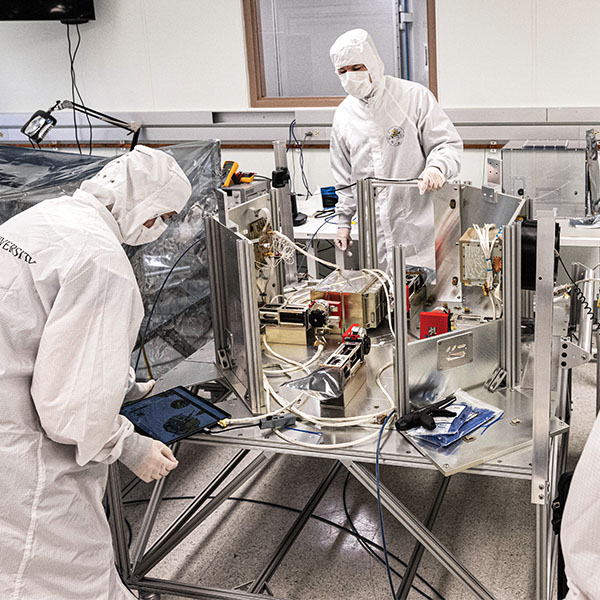After eight years of preparation, a University of Iowa-led NASA mission is poised to launch Wednesday, July 23, from Vandenberg Space Force Base in California.
The Tandem Reconnection and Cusp Electrodynamics Reconnaissance Satellites mission — or TRACERS — will send two satellites into orbit aboard a SpaceX Falcon 9 rocket to study the interactions between the magnetic fields of the sun and Earth, aiming to answer long-standing questions about space weather — specifically how the sun transfers energy, mass, and momentum into near-Earth space.
The satellites, flying in tandem 10 to 120 seconds apart, will orbit Earth’s poles thousands of times over the course of the estimated one-year mission before reentering the atmosphere and burning up, a release stated.
The $165.7 million mission is led by David Miles, F. Wendell Miller Associate Professor in the UI Department of Physics and Astronomy, and marks the largest externally funded research project in university history – in 2019, NASA awarded UI a $115 million contract for TRACERS.
The launch window opens at 1:13 p.m. (CT) Wednesday. To celebrate the occasion, the UI Department of Physics and Astronomy will host a public watch event from 12:30 to 3 p.m. in Lecture Room 1 of Van Allen Hall.
According to the release, two of the mission’s instruments were designed and built entirely at the university. Three others — developed by the UCLA; University of California, Berkeley; and the Southwest Research Institute — were shipped to Iowa to undergo testing by the TRACERS team.
The TRACERS concept was proposed by renowned UI space physicist Craig Kletzing, who led the mission until his death in August 2023.
Editor’s note: This event was rescheduled from its initial Tuesday, July 22 date to Wednesday, July 23. This story has been updated to reflect the change.








